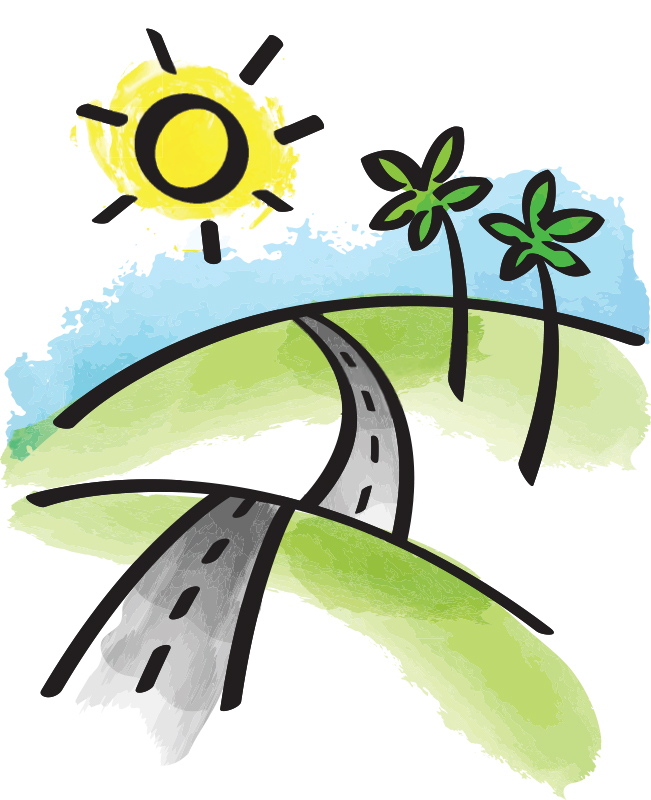
WHAT WILL PREVAIL AT PUNAHOU AND BEYOND AFTER COVID-19
BY DIANE SEO ’85
Early in the pandemic, the focus was on returning to normal. That was the goal – to get back to the ways things used to be before all this coronavirus chaos. Now, a year later, as we look ahead, we see many things resuming, but often in new, adapted forms. This is certainly the case at Punahou, which significantly reinvented several longstanding practices. For this cover package, we take a look at how such shifts have transformed the School and broader world. There’s certainly an adjusted normal now, integrating lessons of the pandemic for a redefined future.
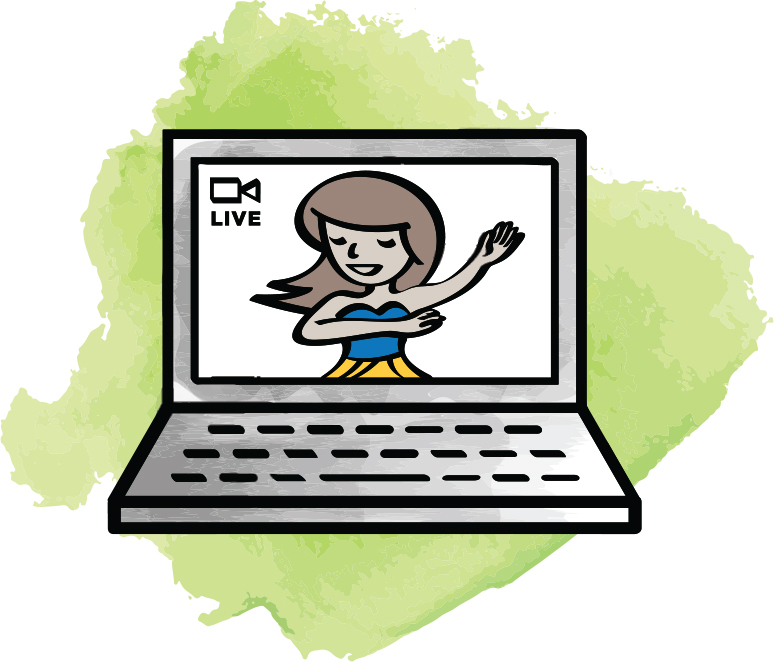
The Show Must Go On
Holokū. Flaming “P.” Variety Show. Alumni Lū ‘au. Reunion Week. These are just some of the longstanding Punahou events that went virtual this past year – pandemic pivots that previously would have seemed unimaginable.
This follows suit with some of the world’s biggest events – the likes of the Cannes Film Festival, South by Southwest and the Golden Globe Awards, to name a few – also shifting online.
So here we are, in the spring of 2021, with an impressive roster of virtual events behind us, wondering what the future holds. At some point, when COVID-19’s grip subsides, in-person events will return. There’s no disputing the magic of live performances and the connections made at face-to-face gatherings. But what Punahou and other event organizers have realized is that many of our online forays were pretty darn effective.
Being forced to go virtual opened our eyes to new possibilities, audiences and revenue sources. We learned to leverage technology to engage with attendees in ways that in-person events don’t. Certainly, no one wants to abandon all things virtual, but rather to integrate it – creating so-called hybrid events.
Punahou, for instance, had long considered organizing online events to expand its reach to alumni, donors and parents. But it wasn’t until the pandemic that the School went full steam online. “We certainly dipped our toes into it before, but with the pandemic, we had to meet it head on, and that’s exactly where we needed to go to complement everything we do in person,” says Punahou’s Vice President for Institutional Advancement Noelehua Lyons ’91 Archambault.
It’s been a year of lessons, explains Doug Rigg ’84, director of Alumni Relations. And along the way, his team learned the intricacies of planning virtual gatherings, and connecting with vendors who could help produce them. Rigg says alumni and others outside Hawai‘i got really excited about engaging with Punahou, so now the thinking is, “Let’s include everybody!”
Looking ahead, he too sees hybrid in-person and online events, sometimes simultaneously. “It’s like the NFL where people in the stadium watching the game have a completely different experience than the people at home, so you have two separate events happening at the same time,” he says. “Just being able to engage that many more people is great.”
He envisions the post-pandemic Alumni Lū‘au once again drawing 2,000-plus people to campus, but also an area under the tent with emcees interviewing attendees for a livestreamed audience. These same folks at home could be mailed a “Lū‘au kit,” filled with treats that can be enjoyed while watching the broadcast. “We’re trying to get really creative,” he says.
Some virtual hits this past year for Alumni Relations were the launch of the Punahou Book Club, which now has more than 1,000 members, and Takeout Tuesday Together, where such local chefs as Michelle Karr-Ueoka ’93 of MW Restaurant and Artizen by MW and Robynne Maii ’92 of Fête Hawaii shared via Webex the ups and downs of their lives in the kitchen, while alumni and others sat at home and enjoyed takeout meals from their restaurants.
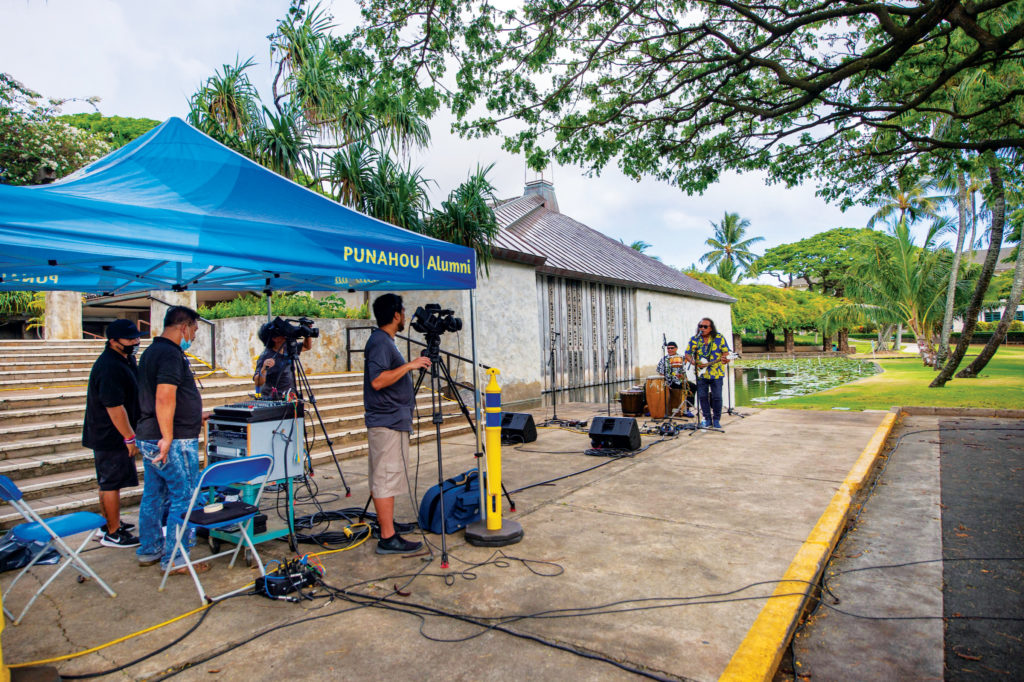
“Those were really deep conversations that likely would not have happened before, and we got to know the chefs at a much deeper level; it has been fantastic,” Archambault says.
Virtual platforms also have allowed the School to reach out to alumni in areas that previously lacked active PAA (Punahou Alumni Association) groups, like in the Midwest. “We’ve got the East Coast, West Coast and Japan, but the middle of the country was being missed,” Rigg says. “Now, when we do something virtual, everyone can take part.”
Beyond alumni events, Archambault also predicts hybrid events for parents, donors and others in the School community. For instance, just prior to the pandemic, the School launched its Team Up parent initiative, inviting national speakers to discuss various topics at the Chapel. The in-person
events drew a few hundred parents, which was a good turnout, but not as far reaching as when Team Up hosted a series of virtual events this past school year, also with noteworthy speakers.
“Parents often aren’t able to attend in-person events because they physically can’t get to campus, but with virtual events, it’s much easier,” Archambault says. “We have so many families with both parents working, so for them to tune in for 30 or 40 minutes to a PFA (Punahou Faculty Association) or Team Up event, or even the general listening sessions the School organizes, has worked really well.”
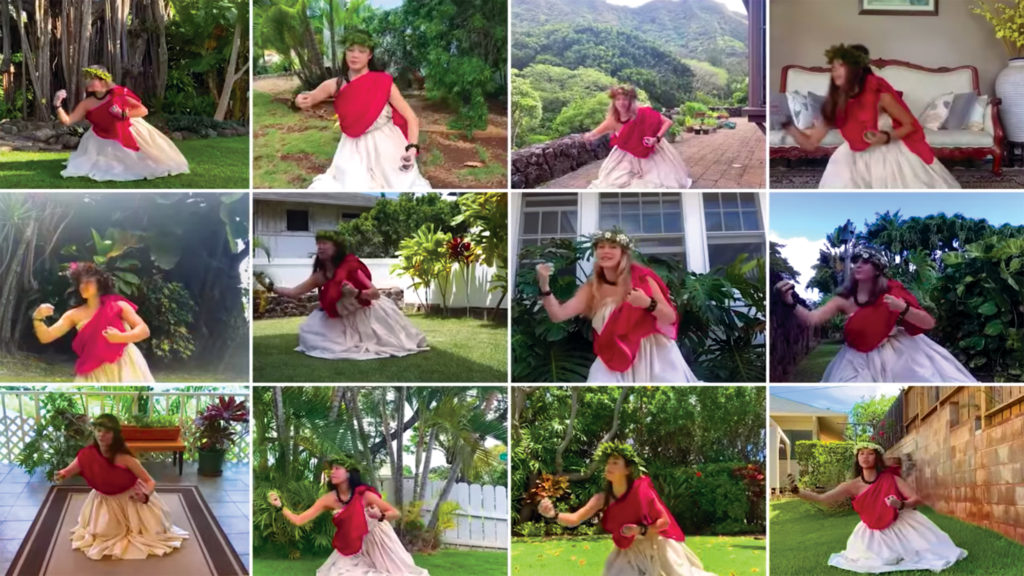
Students who took part in last year’s Holokū recorded themselves dancing from their homes. Their footage became part of the Webex show.
For donors, online gatherings and invitations to view virtual student performances also have been popular. “Some of our donors aren’t as interested in coming to our in-person social events,” Archambault says. “They would like a deeper understanding of our academic mission or an opportunity to delve into our initiatives and programs. So being able to deliver content to them in a rich way through alumni and donor programming has allowed them to see what’s happening at the School in a more tailored and personal manner, on their own time.”
Signature events, such as Holokū, Variety Show and School musicals will eventually return to the stage and be presented before live audiences. At the same time, the School hopes to livestream more events, making them more accessible to those unable to attend. “I think the pandemic brought upon challenges and opportunities for us to figure out how to do things better – and we’re still improving,” Archambault says.
Zooming Ahead
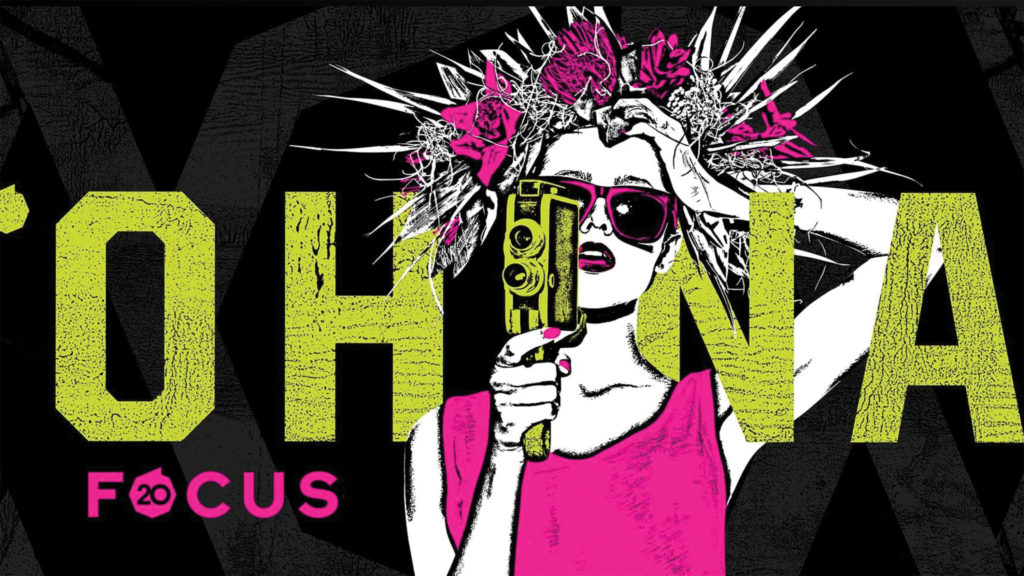
Last year, the small but scrappy ‘Ohina Filmmakers Labs moved its annual two-day screenwriters’ event to Zoom. Although the organization, which supports local independent filmmakers, was just trying to carry on during the pandemic, it discovered substantive benefits from the virtual shift.
For one thing, the group didn’t have to pay for big-name filmmakers to fly and stay in Hawai‘i. The Zoom format also allowed organizers to secure top-notch industry speakers, including Susan Stanton ’99 who writes for HBO’s “Succession” and Scott Moore ’85, who co-wrote “The Hangover.” Joe Robert Cole, whose writing credits include “Black Panther,” also returned for his second ‘Ohina workshop to talk about his career since the blockbuster film.
In past years, only a small group of local screenwriters were selected for the workshops. This year, because it was open to the public, hundreds of people viewed the webinars, says Brian Watanabe ’90, the group’s education director. “We had a lot of support from the local creative community. We broadcast it on our Facebook page and on the Kumu Kahua Theatre page, which probably got about a thousand or so views.”
Organizers are thrilled with the response, and are now planning for the 2021 event to once again be virtual. “We know you can’t substitute the in-person experience – the connections, fun and camaraderie,” Watanabe says. “And I do think there’s a bit of Zoom burnout. But with Zoom, you can ask anybody around the world to participate. Susan was in New York, and Scott was in LA., and we didn’t have to pay anything for them to appear. They did it for free, and they were happy to do it.”
The end result, Watanabe says, it that more Hawai‘i filmmakers can learn about the industry from top-notch talent, which is why the two-decades-old organization formed in the first place.
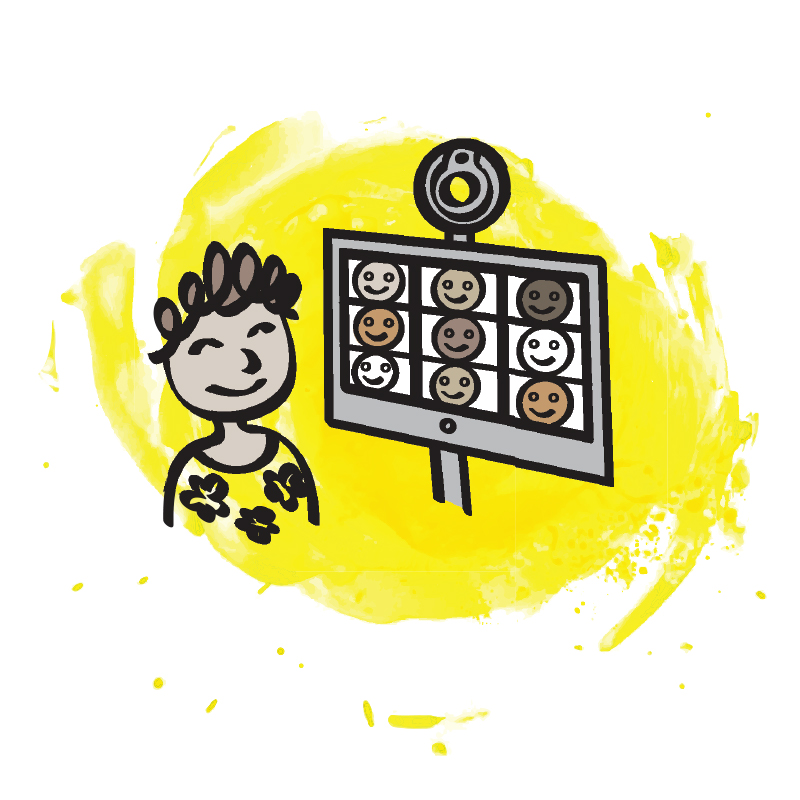
Education Won’t be the Same
After COVID-19 forced students out of the classroom, requiring them to learn from home, educators around the world scrambled to carry on virtually. It wasn’t perfect. Faculty, students and parents, including at Punahou, struggled with the abrupt shift to distance learning. But over time, things settled. Relying on technology and online platforms became less daunting, and teachers and students got used to new ways of doing things.
Punahou students returned to campus last October, with new schedules and structures in place, yet still relying on online tools that sustained them through the pandemic. Now, educators at Punahou and beyond are considering the next school year, contemplating a return to the so-called “normal” versus keeping some of the new practices.
Academy Principal Emily McCarren says there are different camps. Some can’t wait for a return to the way things were before, with the same classes, schedules and structure as before COVID-19, while others hope at least some pandemic-adopted practices will continue. What stays and what goes? That’s the big question, but with the added consideration of what can be created based on what was learned.
“There may be an opportunity to reimagine what schools will look like,” U.S. Education Secretary Miguel Cardona told The Washington Post. “It’s always important we continue to think about how to evolve schooling so the kids get the most out of it.”
McCarren believes many things implemented proved to be great for kids and learning. In fact, some changes had long been considered, and necessity offered a runway for them to be quickly adopted.
For example, the traditional Academy schedule has been in place since the early 1970s. It changed after the pandemic, with a later starting time for Academy classes (8:15 a.m. instead of 7:30). “There’s a lot of evidence that starting early is not the best thing for the adolescent body and mind, so we started the school day later in this new schedule, and that’s worked out really well,” McCarren says.
For the 2021 – 22 school year, Academy students will have an 8 a.m. start time.
In the Academy, there was a need this school year to place students in cohorts to limit their exposure to others, so administrators restructured the curriculum into block and semester classes, with students taking fewer classes during each of the six sessions. Although Academy students will return to all semester classes during the 2021 – 22 school year, the schedule will be simplified so students won’t have all of their classes on any given day.
“When kids have only a few classes a day, the number of peers they come into contact with is smaller, and the cognitive load of taking a whole bunch of classes at once diminishes,” McCarren says. “The remarkable thing is that we created something that served our pandemic needs, but also is really good for kids.”
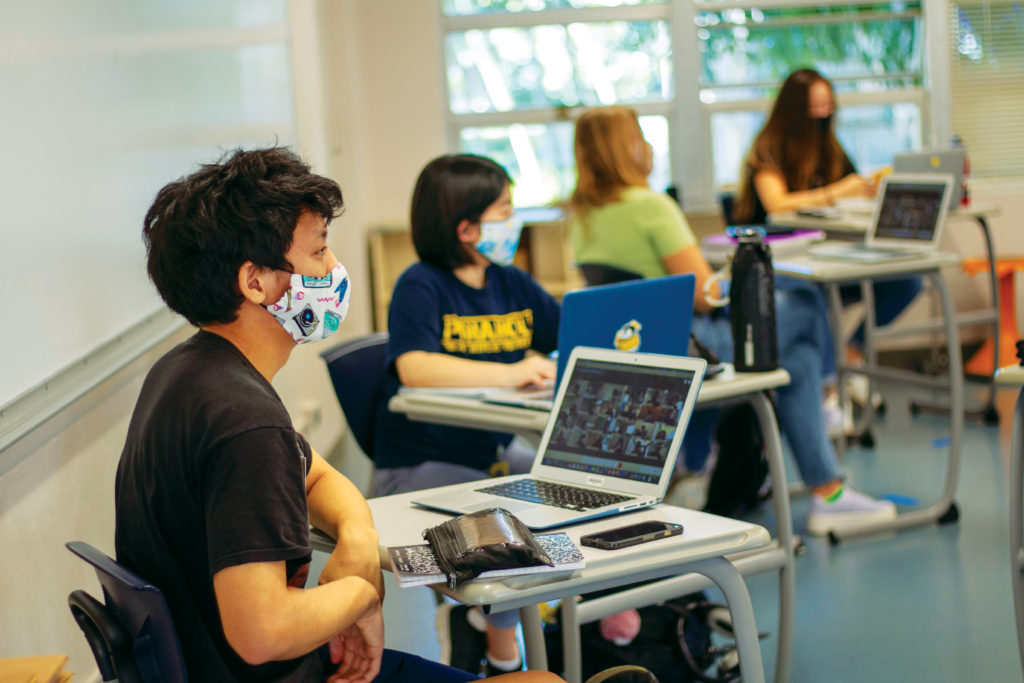
Integration of virtual learning
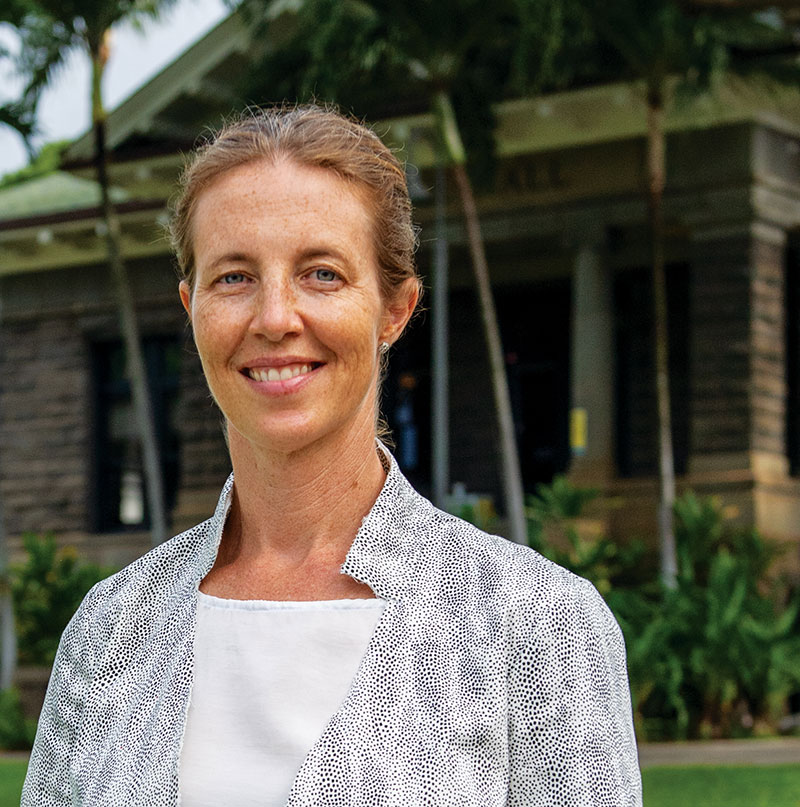
It’s no stretch to say virtual learning has been normalized at Punahou and beyond – and that isn’t changing, at least not entirely. While the majority of Punahou students are now back in the classroom, many Academy students are still taking some classes via Webex to safely remain in their cohorts. And even with plans to bring all students back in the fall, the School is hardly abandoning virtual learning.
McCarren says feedback from a recent Academy survey revealed that many students prefer asynchronous, online assignments that allow them to work on their own schedules. Many still want online learning options, even beyond the existing Global Online Academy (GOA) courses that have long been offered as electives. Thus, McCarren and her team are looking at ways to do this.
For Junior School students, especially at the younger grades, there is no replacement for in-person instruction, says Todd Chow-Hoy, Junior School assistant principal. Distance learning was necessary during the pandemic, but few would argue that it’s better for young children to learn via a computer than together with a teacher and classmates, he adds.
But that’s not to say the online tools that were adopted during COVID-19 will be abandoned. One pandemic-necessitated tool that’s staying put is Canvas, an online educational platform now used by all Punahou students in grades six through 12.
Canvas proved to be an effective way to keep assignments organized and for students to get feedback about their work, says Chase Mitsuda ’98, Junior School assistant principal and dean of faculty and curriculum for grades 6 – 8. “It creates a hub where all your class resources, assignments and due dates are in one place, and it’s really helped to have this one platform used consistently.”
Some teachers previously hesitated to utilize more technology. But during the pandemic, they were required to use tools like Canvas, and as a result, the entire faculty has become a lot more technology savvy, which will benefit students going forward, McCarren says.
Even for the youngest students, the usage of common software and online technology has allowed the faculty to make the curriculum more coherent, Chow-Hoy says. “Utilizing tools like Seesaw across K – 5 allowed us to clearly identify learning targets at each grade level, which created a consistency,” he adds. “The pandemic really opened teachers’ eyes to different ways of approaching student learning that many have now incorporated into their normal practice.”
Yes to virtual parent meetings
Another pandemic practice that proved to be popular was connecting with parents virtually. For instance, Junior School parent-teacher conferences this spring were conducted via Webex. Although the pivot was necessary, many parents and teachers appreciated the convenience and want the online option to remain. “Everyone has tremendously busy lives, and this allows for people to easily connect,” Mitsuda says.
Teachers this past year also took advantage of the cameras that were set up in their classrooms to facilitate distance learning. Even after the return to campus last fall, some creatively used the cameras so parents could take part in classroom activities.
Over the holidays, one kindergarten teacher organized a class gingerbread-making activity, making it viewable to parents over Webex. “That was a very creative way for us to incorporate families into those kinds of experiences, and we could continue things like that,” Chow-Hoy says.
It remains to be seen exactly what pandemic practices will persist. But one thing is clear: COVID-19 definitely challenged all sorts of assumptions about teaching and learning. “Many things we attempted didn’t work well, but some things did,” McCarren says. “Although it’s been a relentless pace and just emotionally and physically draining for many people, I think everybody, to some extent, can point to something they’ve done differently that’s better than what they had done before.”
Global Online Academy is Having a Moment
Before the pandemic, there were always questions about online learning, says Michael Nachbar, executive director of Global Online Academy (GOA), an international online program for high school students. Can learning take place exclusively through a computer? Will there be meaningful interactions among students and their teachers? Now, a year later, such questions have been put through a massive test worldwide, with virtual learning emerging as an accepted norm.

GOA, which Nachbar describes as “relationship-based, high-quality online classes for kids who are intellectually curious and academically capable,” has seen a 40% jump in enrollment this school year, with some 2,400 students from 120 schools in 26 different countries currently taking GOA courses. Although Punahou is a founding member of GOA and has offered its elective classes for the past decade, significantly more Academy students also signed up this year, says Academy Principal Emily McCarren, who is on the board for Global Online Academy and was one of the program’s first teachers. “Students definitely got comfortable learning online.”
This summer, for the first time, Punahou will offer GOA courses (as well as its School-driven, virtual “Exploration” courses) not only to current Academy students, but to children of alumni and students at some partnering public schools. Along with providing intriguing online learning options, this expands the School’s reach, helping to fulfill one of its aims to be a private school with a public purpose.
Through Zoom, GOA brings together students from around the world, interested in exploring such topics as Race & Society, Positive Psychology, Legal Thinking and Medical Problem Solving. Because of the different time zones, classwork tends to be asynchronous, but with students getting to know each other by working on small group projects. The benefits, Nachbar says, are numerous. “Students get to share their personal and local perspective with a group of students from around the world, and then learn from other people’s experiences.”
The classes themselves also draw students keenly interested in subjects,
which tend to bring about higher-level discussions. “The number one reason kids take a GOA class is because it’s a subject they’re passionate about, and the idea of ‘geeking’ out with 18 other kids from around the world who are equally passionate about it is really exciting,” Nachbar says.
Zoey Duan ’22 loved the neuropsychology GOA class she signed up for, and the fact that instead of lectures, it focused on collaborative work and research projects. “I had the ability to interact with students my age that were from all over the world,” she said. “Truthfully, GOA might put you out of your comfort zone, but it’ll ultimately help you develop new skills and knowledge through a broader, more diverse lens than you would in a typical classroom setting.”
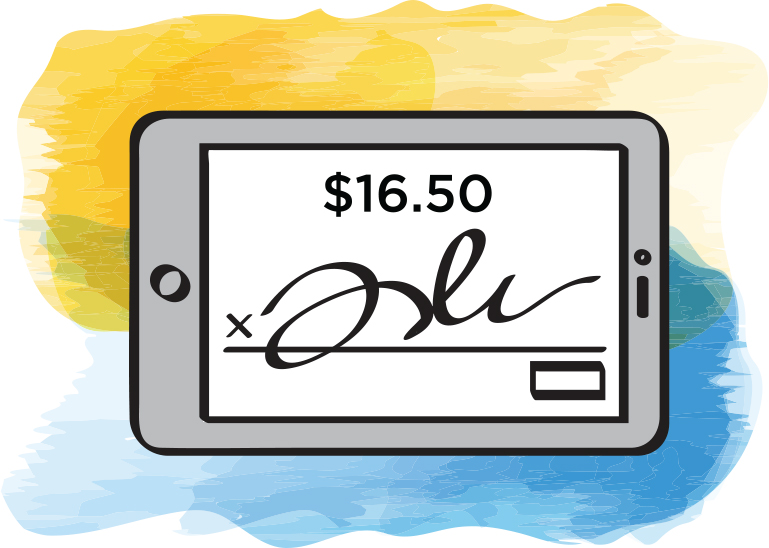
New Ways of Doing Business
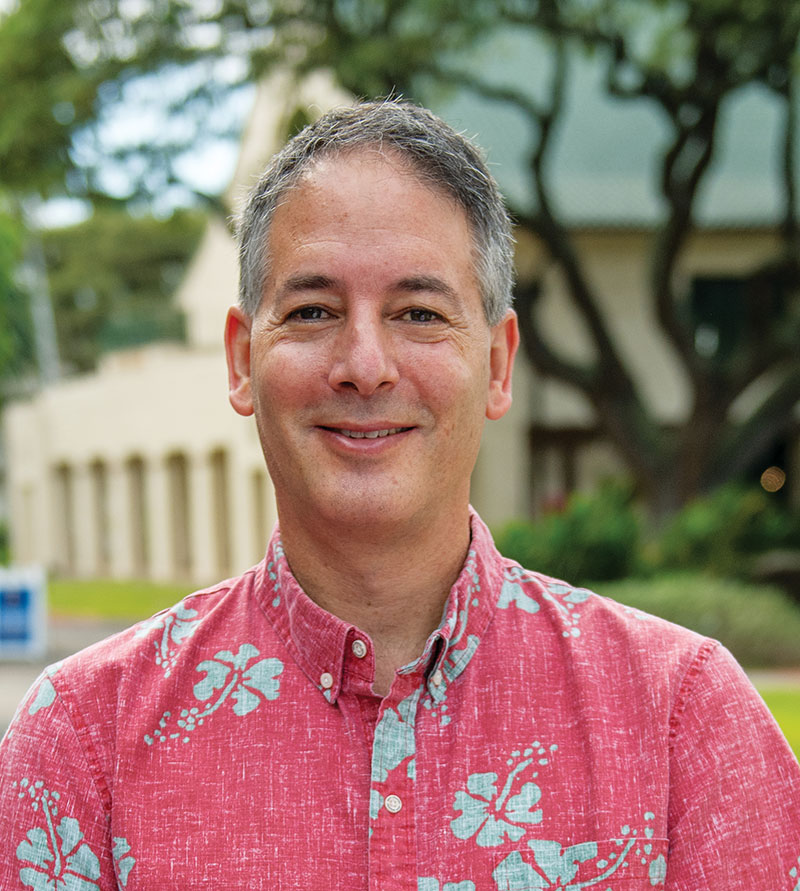
Businesses across the planet confronted a common scenario during COVID-19 – pivot or perish. Restaurants hustled to set up online ordering, efficient takeout, curbside pickups and outdoor dining, while retailers leaned heavily into e-commerce, in some cases, abandoning their brickand- mortar operations. Cash also was no longer king, replaced by simpler – and safer – swipes, inserts or touches of a credit card. Independent schools such as Punahou also adjusted their practices. While some of these shifts are temporary, others will carry on, fundamentally changing the way our world dines, makes purchases and simply does business.
Punahou had to make critical investments during COVID-19, significantly increasing its financial aid to struggling families, and spending more than $3 million on Personal Protective Equipment and to hire additional faculty to reduce class sizes. Identifying new revenue sources will take some pressure off tuition and allow the School to consider more modest increases in the future, says Sunny Donenfeld, Punahou’s vice president of finance and operations.
With the leadership of parent and student chairs, the Carnival Art Gallery – online this year for the first time – proved to be a financial success, allowing far more people to conveniently purchase artwork than in years past, when the gallery was viewable only to those attending Carnival on campus. “That’s something we would look at continuing,” Donenfeld says. “But there’s a balance between convenience and the fun people have being able to walk through the space and getting close to the art.”
This year, only those who could pick up their purchases on campus could buy from the Art Gallery. In the future, if shipping is worked out, the gallery could be extended to alumni all over the world, which is something the School will look at, Donenfeld adds.
Punahou families also loved this year’s Carnival Drive-Up Movies, a new event on Middle Field where attendees watched a movie and Variety Show from their cars, while being served malasadas and other Carnival favorites. “It was like a summer camp-out event, where people had their hatchbacks open, and sat in the back of their pickup trucks with blankets,” Donenfeld says. “That was really fun.”
While the event couldn’t happen during an on-campus Carnival, Donenfeld says it’s possible for it to take place the weekend before or after, or maybe during other times of the year, to help add to the Carnival’s financial aid fundraising. Raising additional funds for financial aid remains a top priority for the School, he says.
Donenfeld also sees opportunities to sell tickets to professionally live-streamed School events, like Holokū, Triennial and theatre productions. While these events would still take place in person, providing an online option would allow for added revenue, but more importantly, allow for expanded audiences.
The bookstore also plans to expand its e-commerce operations, selling more logoed goods and other products. “The pandemic showed us that people are very comfortable buying things online, but the reality is that that is something we should be looking at anyway,” Donenfeld says. “It’s a priority to look at how we can build a bookstore that’s commensurate with who we are as a top independent school.”
On the educational front, distance learning – which became de rigueur during COVID-19 – has led to Punahou offering online summer school classes to alumni families and others around the globe, including Global Online Academy and Punahou Exploration classes to high schoolers; dance and music classes; and other virtual options. This not only offers strong educational opportunities, but it better connects alumni to the School and provides additional revenue.
“The planning and resources that made our time in distance learning successful has created opportunities for us to broaden our summer school offerings this year to include a variety of online learning options for our entire community,” the School wrote in its announcement about the new program.
“This is a huge opportunity for us,” Donenfeld says. “Finding space in buildings and classrooms for classes like this aren’t constraints anymore. This will allow us to reach a lot of people, beyond our students here. It’s a really neat opportunity for people who don’t live here to connect to Punahou.”
All in for E-Commerce

For Tanna Dang ’96, switching the focus of her Eden in Love boutiques from in-person to online was like trying on an uncomfortable new dress – she couldn’t really rock it at first. The Honolulu and Las Vegas shops owned by Dang and husband, Bryson, were coming off a record 2019. Then COVID-19 shuttered non-essential retail, leaving Dang with no way to reach customers except Eden’s website. “Doing everything online just felt so eerie, foreign and disconnected. It was all the things we didn’t know how to do,” she says. “Being together as a community – one on one, touching each other – was what we did.”
Everything had to shift. For Dang, this meant making the website feel like a storefront and Instagram posts like a conversation – changing the look of photos, distilling product info into playful captions, creating limited-time discounts and teasing fans with calls to action. By the time the stores reopened, the website was driving 50% of sales. But after 16 years of boutique retail, Eden’s comfort zone was creating personal connections.
So the Dangs rented a 30,000-square-foot space for pop-ups and shopping events, only to close it when O‘ahu’s case counts soared. And Black Friday was coming up, when hundreds of excited fans lined up for steep discounts. Black Friday generated in one day what the brick-and-mortars did in two months. Now that, too, had to go online – with no event excitement to build up shoppers’ anticipation.
Dang’s solution was to create excitement online. She came up with a shopping code and promoted it on Instagram. Offering free swag, 50% discounts and early access to website merchandise for three Fridays in November, 2,500 codes sold out. The first Black Friday, at midnight, Dang watched the online store ring up 1,001 sales in 10 minutes. The next decision was easy: Eden’s flagship Honolulu boutique was closed in January.
“Taking Black Friday online saved us. That saved our staff,” Dang says. “By end of November, we did better in 2020 than 2019. We realized there’s a huge opportunity with Eden people in Las Vegas, New York, Japan, Australia, Oregon. It’s amazing the reach you have on the internet.
“Online is an opportunity, and we can choose to do it really well. We’re going to research every single thing on how to go online, ask every single person, read everything, get on every webinar. We can’t imagine things will ever go back to the way they used to be.”
– By Mari Taketa
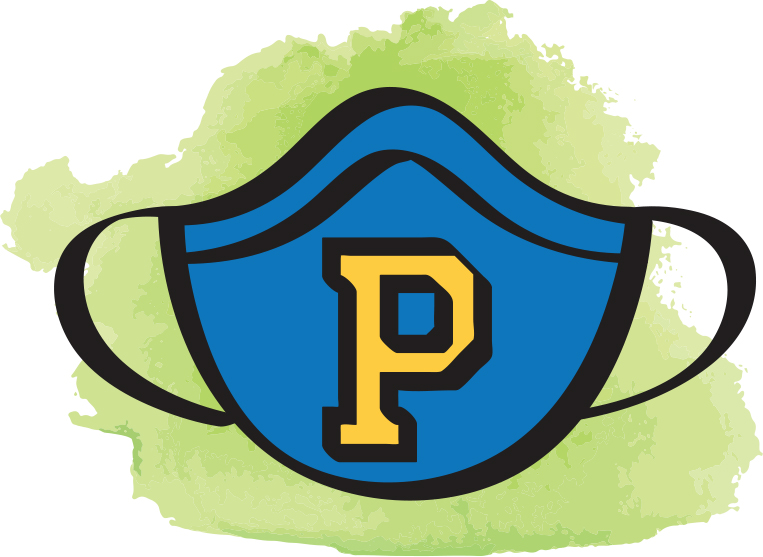
Staying Safe and Healthy
Are masks, hand sanitizing and social distancing here to stay? Many experts say, “Yes,” at least to some degree.
After a year of living dangerously amid the threat of COVID-19, we’ve gotten used to donning masks, washing and sanitizing our hands and keeping safe distances from others, especially indoors. Not only has this helped protect us against the coronavirus, but it’s led to a historically low incidence of the flu. The Centers for Disease Control and Prevention (CDC) says this season, only about 0.1% of flu tests are coming back positive, compared with 20 to 30% in previous years.

Undoubtedly, COVID-era caution can be credited, especially with adopted practices like wearing masks and staying home when sick, says Ginia Loo ’92, Punahou’s director of analytics who co-heads the School’s Pandemic Response Team. As such, the policy of staying home when sick will continue to be strongly enforced at School, she adds.
Plus, while a significant percentage of U.S. adults are likely to receive the COVID-19 vaccine by the end of summer, vaccines haven’t yet been approved for those under 16, which means only a segment of children and teenagers are likely to be vaccinated by the fall. “It will take some months before those under 16 can be vaccinated, and that’s something we’re going to have to plan for,” Loo says.
Earlier this year, she told staff at a Punahou Advancement meeting that while the School expects classes and most co-curricular activities to take place in-person next fall, safety protocols will still be in place, especially inside classrooms. “Continuing to use masks is very likely to be the case, along with continuing with hand hygiene and favoring outdoor activities whenever possible,” she says. “Maintaining distancing will also be an issue, but, not at the same level as it has been this year.”
The School also expects to adopt ways to limit cohort size (i.e. the number of other students a person is in contact over a week) and remain mindful of density on campus, possibly continuing to allow Academy students to be dropped off and picked up according to their class schedules to reduce the number of people on campus. There will also be continued attention across campus on keeping everything from classroom supplies to devices sanitized.
Outside of schools, the prospect of wearing masks in airplanes, stores and other public places also exists, along with other pandemic-related practices. For example, it’s hard to imagine that coming to work coughing, sneezing or just not feeling well will be tolerated. “It’s a fluid situation, so it really depends on what’s going on with the epidemiology of the virus,” says Neil Kaneshiro ’85, a primary care pediatrician who works in the Seattle area. “But I think people have become acclimated to things like masks.”

Even prior to COVID-19, people in Asia were wearing masks during the winter season to protect themselves from viruses. “It’s not going to be everybody,” Kaneshiro says. “But there are going to be people who want to be safer and reduce their risk of catching things like the flu. Pre-COVID, we thought people who carried around hand sanitizer and washed their hands all the time were being excessive, but now, we consider that standard.”
Even in his own medical practice, Kaneshiro sees a continued focus on safety. “The safety protocols have dramatically changed how we see patients, and we have lots of rules in place that will remain,” he says.
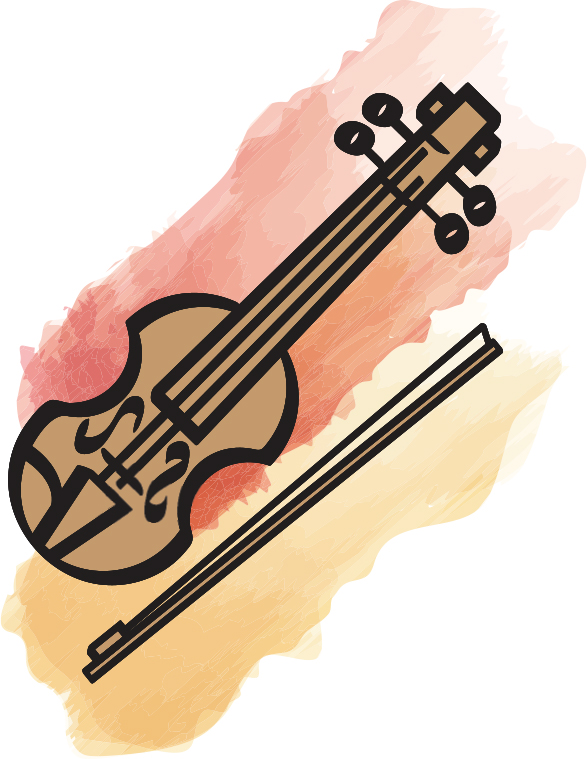
Let the Music Move You
Live performances were canceled worldwide, and musicians and other performing artists were restricted even from rehearsing together during heightened periods of COVID-19. Amid this stark scenario of pandemic protocols, Punahou’s Music School dramatically changed the way it functioned, with lessons, recitals and performances all making virtual shifts.
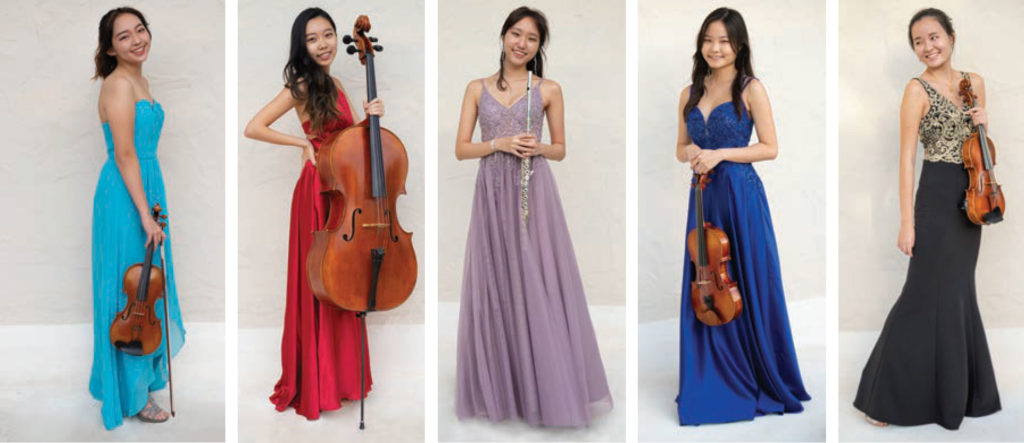
It required utmost resilience, persistence and creativity to help students grow musically, says Director Helen Chao-Casano. But while eager to return to in-person instruction and concerts, she says the year of hustling and innovating was hardly in vain; in fact, some practices allowed for broader audiences and even new depth.
Take, for instance, Punahou’s recent Concerto Showcase, an annual performance featuring selected senior soloists. This year’s virtual concert was extraordinary, including in-depth interviews with each performer accompanied by high-quality, multi-camera footage of each performance in Dillingham Hall. The format allowed audiences to learn more about the performers, including their inspirations and interpretations of the music they were playing. “The students felt like campus rock stars with the attention and care that was given to every aspect of this experience,” Chao-Casano says.
Student musicians also took part in other ambitious virtual productions, including holiday presentations of “Honolulu City Lights” and “Have Yourself a Merry Little Christmas.” Chao-Casano says the Music School student recitals, which began last October, taught students to share their music in new ways, and allowed family members from outside Hawai‘i, including internationally, to “attend” recitals. One set of grandparents in Japan had never seen their grandchild perform in a recital. “It was quite touching because we saw them sitting on the couch together, watching,” Chao-Casano says. “It’s redefined my concept of audience.”
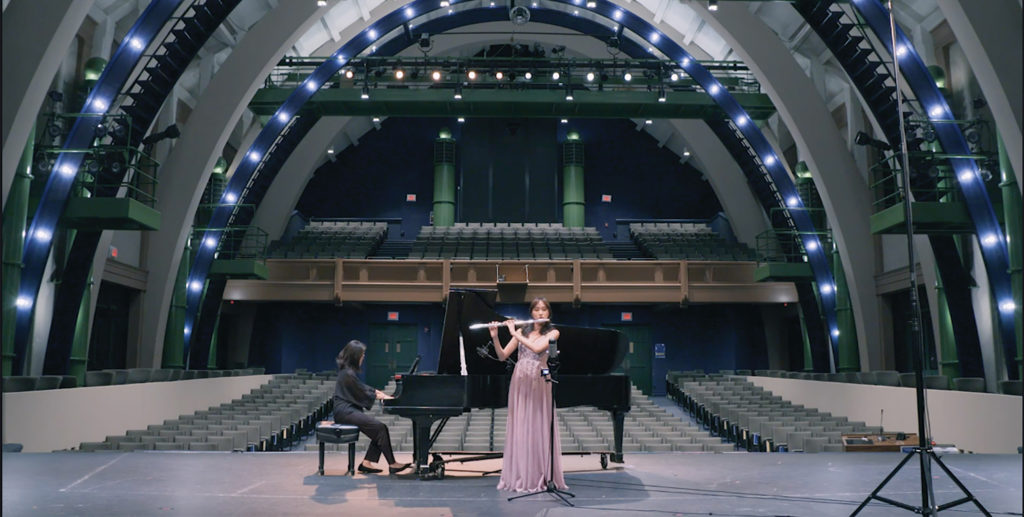
Chao-Casano is now hoping to add video equipment at Montague Hall to make livestreams the norm. “I don’t know if I’ll do it next year because it’s very expensive,” she says. “But I want to upgrade with better lighting and video cameras, so we can stream recitals and have easier ways for kids to review recordings of themselves.”
Punahou’s music faculty also became more technically adept. At first, some needed to figure out just how to do a virtual meeting. Now, those same teachers are texting video closeups of their wrist position while conducting online lessons.
“In the beginning of the pandemic, I could not stand being in front of a computer all day long, but we’ve all learned how to be malleable,” says Iggy Jang, concertmaster with Hawai‘i Symphony and a member of the Punahou Music School faculty. “The saving grace for me has been to see how eager and flexible the students have been.”
In January, Jang finally got a chance to return to Punahou to work with his student string quartet in person. He describes the day as one of the best days of the year. Still, he says, he’s glad he’s learned to use online tools that can enhance instruction.
As pandemic restrictions are lifted, in-person instruction, classes and performances will resume when deemed safe, but online instruction will likely continue to some degree. If students, for instance, can’t make it to their lessons at School, they could still participate from home. Students outside O‘ahu also could potentially take virtual lessons through the Punahou Music School. “Learning on screens doesn’t work for everybody,” Chao-Casano says. “But constraints are always what challenge our creativity.”
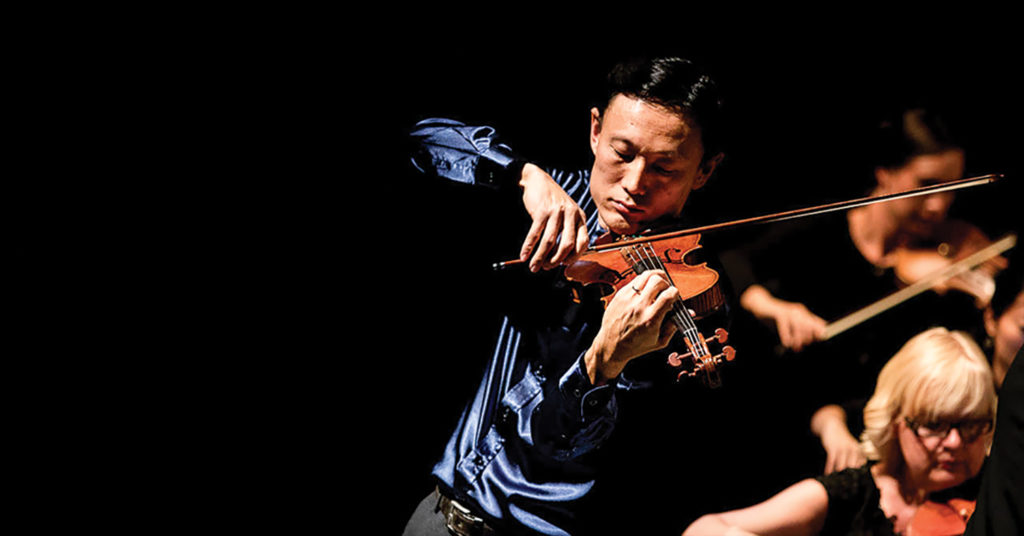
Hawai‘i Symphony Shows Resilience
Last spring, the music stopped for the Hawai‘i Symphony Orchestra. “Everyone had to stop, right?” recalls Concertmaster Iggy Jang, who teaches chamber music at the Punahou Music School.
The abrupt shutdown was frustrating and unnerving, Jang says. Then, after months of idleness, the Sounds of Resilience was launched as a series of livestreamed performances with Hawai‘i Symphony musicians playing at Hawai‘i Theatre. “We learned how to perform in small groups with some physical distancing,” Jang says. “The end goal for us is still to get back together as a whole symphony, but during this process, we learned about technology, and video and audio production.”
Sounds of Resilience was a success, as was the Symphony’s other virtual shows, Ron Artis II’s “Journey Together” and “The Nutcracker” with Ballet Hawaii, which collectively reached tens of thousands of viewers well beyond the Islands. Through these shows, the Symphony strengthened its partnership with such local media as Hawai‘i Public Radio and Hawaii News Now, which broadcasted the virtual performances. “We are communicating through music, and we’ve been able to find ways to do it with this new platform,” Jang says.
Jang and Hawai‘i Symphony Executive Director Dave Moss also began hosting a weekly Zoom chat, called “Tuning Up,” that’s available on the Symphony website and its Facebook page. They receive feedback and questions from people all over – in ways that didn’t happen before. “The silver lining has been that the Hawai‘i Symphony has been able to make a name for itself outside of our beautiful Island,” Jang says.

The New Normal – Remote Working

If there’s one thing we know will outlast the pandemic, it’s working from home. The number of Americans working remotely peaked at over 30% last May, according to the U.S. Bureau of Labor Statistics, and while those numbers have come down, McKinsey & Co. estimates more than 20% could continue effectively working from home three to five days a week.
Hawai‘i’s situation adds a few twists. Weather, beaches and a low rate of COVID-19 cases make paradise even more desirable, as evinced by more than 90,000 applications for 50 openings in the first cohort of Movers and Shakas, a program that subsidizes 30-day work stays for professionals who can do their jobs from the Islands.
And anecdotes abound of pandemic-fleers who have temporarily relocated to Hawai‘i on their own. Michelle Yoshida ’08 started flying back and forth from her job with a large reinsurance company in New York City, and has been working from her parents’ Kāne‘ohe home since March 2020. She can rattle off six Punahou friends doing the same – a real estate investment specialist, digital designer, consultant, techie working at Facebook and Instagram, as well as owners of a skincare line and an international wedding planning business.
For Yoshida, who says her experience has proven to her company that working from the other side of the country is feasible, the question is how will it affect her professional future? There are no chance meetings with her manager, no networking with colleagues at impromptu get-togethers, and few opportunities on Zoom for the kind of casual chitchat that can open up a move.
“It adds a level of complexity, and you’re literally in a tougher position for career advancement. But those are boundaries I think we can break through or work past,” says Yoshida, who makes it a point to be clear with her manager about her goals. “It’s a matter of trust. Traditional companies might not have thought they had that level of trust with their employees, but the pandemic has forced them to have that trust. I’m excited to see what remote working can do for all industries, to be honest.”
– By Mari Taketa

Stepping Up
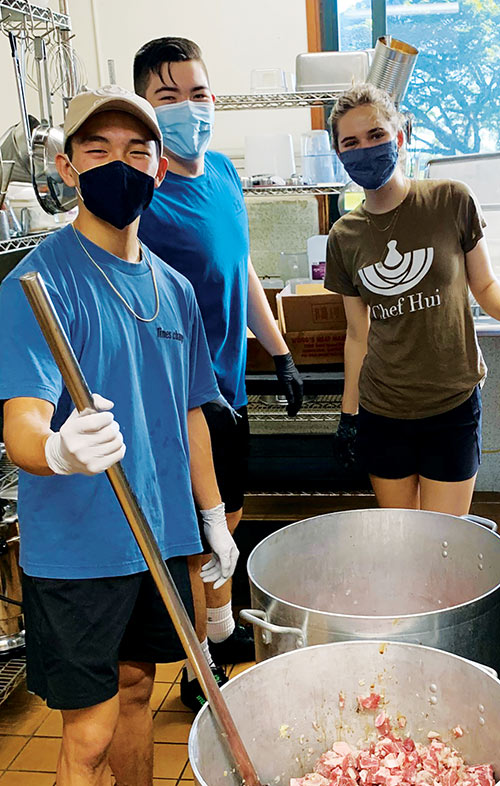
Scores of Punahou students reached out last spring to Dani Goddard, director of the School’s Luke Center for Public Service. “There was an extreme increase in students asking for ideas and wanting to participate in COVID-related projects,” she says. “It had sunk in that people were dying or getting very sick, and that front-line health and other workers were risking their own health to care for them. That’s when students started showing a lot of compassion.”
Volunteering through the Luke Center, the Case Accelerator for Student Entrepreneurship and other School initiatives, Punahou students stepped up for everything from making masks for medical workers, delivering boxes of food to ku¯puna, and selling homemade goods to raise money for Punahou financial aid. “I’m so blown away by them,” Goddard says.
She believes Punahou students learn from an early age that they must do their part. “There’s something about Punahou’s culture that when something happens, we help. That’s the message they were raised with,” she says. Plus, many sports and other activities were canceled, and a lot of students “came out of the woodwork saying, ‘I want to do something.’”
These altruistic missions spanned the globe. Goddard herself has cousins in Poland who she talks to regularly, and she said they’ve noticed similar things with youths there. “I think a lot of people realized these are hard times, so whatever needs to get done, they want to help.”
She believes the pandemic has fundamentally shifted people’s connection to their communities. “Students have changed,” she says. “I’ll be curious when things start up who makes time for this, but I would say this was a really big life lesson for them. I find it very hard to believe that they walk away from this experience and forget the role they played in it.”

Appreciating the Great Outdoors
Punahou has long encouraged students to learn about and appreciate the outdoors. But during the pandemic, all School trips, including the anticipated fifth-grade excursion to Hawai‘i Island, were called off.
Outdoor Education faculty Andrew Nelson and Shelby Ho ’01, nevertheless, found creative new ways to carry on their program exclusively on campus. “We have no shortage of outdoor space and things that we can do with kids on campus, and there’s value in that,” Nelson says.
For one thing, Junior School students spent more time tending to Punahou’s own gardens and natural habitats. They propagated seeds, worked on reforestation projects and collected flowers and seeds from native plants to make lei. “I just love the idea of how kids have been made more aware of what treasures there are here,” Ho says.

Fourth and fifth graders also helped propagate more than 500 plants, which became popular items for sale at this year’s Carnival. “Growing plants for Carnival just scratched the surface as far as what we could do,” Nelson says. “In the future, we could propagate thousands of trees and plants, and I think the message is cool that people are buying plants that the students propagated from our own plants grown on campus.”
Children also came up with imaginative ways to play outside without balls or equipment, which were not permitted because of safety protocols. “They really had to play in different ways, using their imaginations, and because of this, they realized they had different options,” Nelson says. “They didn’t just play foursquare on the cement; they built statues out of rocks, played with sticks and things like that. We hope that even when trips resume, the growing connection kids have with their own campus and the living things here won’t go away.”
Into the Woods
Forest bathing isn’t what you think it is. Phyllis Look ’72, Hawai‘i’s first certified forest therapy guide, describes it as a guided experience to restore well-being through immersion in the natural world. In other words, you keep your clothes on.
In a forest or garden somewhere on O‘ahu, if it’s a rainy day, “Just listen to the rain,” Look might tell bathers. “Notice how it feels to listen. Where else is this rain taking you?” After two hours, she says participants are transported to a different place. They stop worrying about how people are judging them. “They simply become again creatures that evolved out of this natural world,” she says.
Look doesn’t connect people to just rain. It could be trees, the wind or sun. Forest bathing began in Japan as a reaction to postwar social stressors so great they gave rise to karōshi, or death from overwork.
It’s beginning to catch on in the United States now, similar to the way yoga gained a following in the 1980s. The pandemic for a time closed Lyon Arboretum and other quiet green spaces she uses for her Forest Bathing Hawai‘i walks, but it also brought in more participants seeking to reconnect with nature, ironically via Zoom.
Look’s bathers include everyone from employees being rewarded by their employers to people seeking antidotes to depression. She’s guided students, stressed-out health care workers and others looking to disconnect. “Everyone has been profoundly changed [by the pandemic],” she says. “I think there will definitely be a greater sensitivity to the power of the natural world. I think we are in a way humbled, and that humility is a good thing.”
– By Mari Taketa
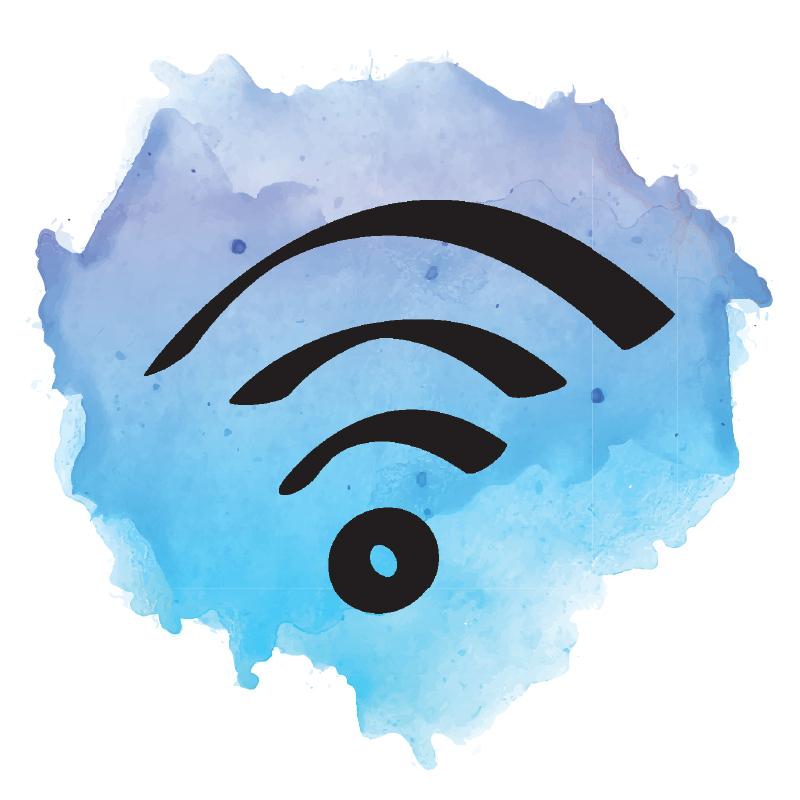
All Systems Go
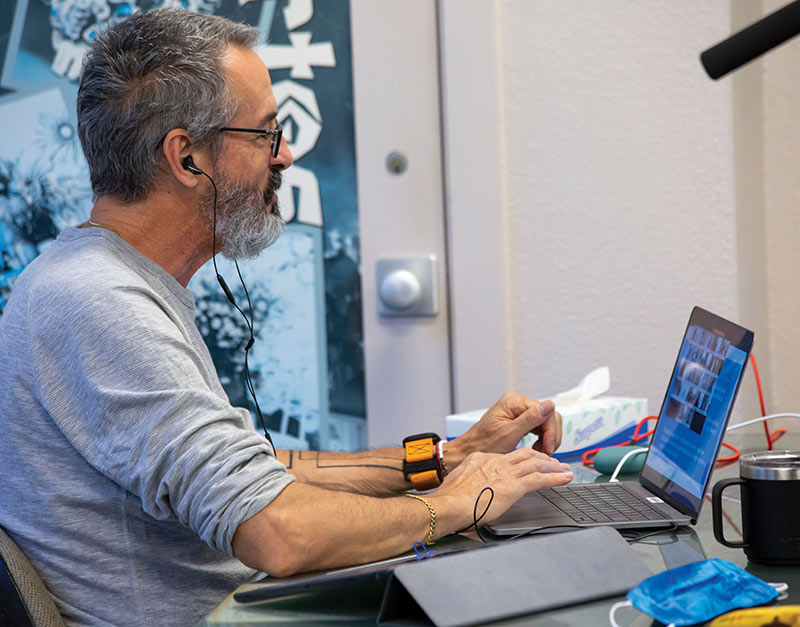
Technology has long powered the daily routines at Punahou, but during COVID-19, it became absolutely essential for instruction to even take place. Last spring, following Hawai‘i’s order to quarantine, Punahou’s IT team sprang into action to get everyone at the School on Webex. Previously deemed as an optional video conferencing tool, Webex soon became the School’s distance learning and operational lifeline.
Webex had been in place at the School for more than a year prior to the pandemic, but it was rarely used – maybe only a couple dozen faculty or staff had used it, says Todd Funasaki, Punahou’s director of technology services. Compare that to this school year (from last August through mid-March), with the tally at 147,000 Webex sessions, with more than 1.8 million total appearances of students, faculty, staff, parents and others.
Even after students returned to campus last October, Webex proved critical, not just to connect the remaining distance learners, but to allow Academy students to attend certain classes while remaining in their cohorts. It’s also still being widely used for meetings, School events and more. Everyone has recognized the power of being able to easily convene groups of people online, share screens and “chat,” and Webex has become part of how we function now and in the future.
Internal apps, created by the IT team, also were instrumental this school year. Take, for instance, the new lunch ordering app, which allows students and employees to log into the School’s online portal each week, view the menu and place orders. “Before the pandemic, we would have thought no way would we rely on students to order their lunches ahead of time, then have the cafeteria go through the data, prepare the food and deliver it,” Funasaki says. “But we worked closely with the food services team and deans to scope out and test the system, and it’s working.”
The efficiencies of the system, which includes reducing food waste, mean online ordering will very likely continue, beyond the pandemic. The same goes for the School’s new “pick-up” app, which reduced walkie talkies in directing Junior School students to their cars at the end of the school day. “With so many kids now having to get picked up right after school, we worked with the Junior School to create a new system,” Funasaki says. “Now when a car drives in, the folks at pickup type kids’ names on the app. The kids know they can go to their pickup when they hear their names on the TVs inside their classrooms. It’s much more focused and controlled, so that’s another thing that will live on, but in an evolved way. We’re going to continue to optimize the flow of that.”
With technology driving School operations, Punahou made a significant investment to improve its internet connectivity this past year. There were several areas in campus with poor Wi-Fi connection, and after students and faculty began spending more instructional time outdoors for safety reasons, more than two dozen new Wi-Fi access points were deployed, says Shige Minami, the School’s infrastructure technology director. Prior to the pandemic, the School was delivering internet speeds of about 1 gigabit per second; it’s now at 10 gigabits per second. This enhanced infrastructure undoubtedly will allow for technology to continue to facilitate School operations, way beyond COVID-19.

Prioritizing Mental Health
We’ve seen the sobering headlines about the startling rise in teenagers struggling with depression and anxiety. Mental health issues were already escalating among young people prior to the pandemic. But now, the alarms have been urgently rung.
Nationwide, mental health-related emergency room visits rose 24% for 5- to 11-year-olds and 31% for 12- to 17-year-olds between April and October 2020 over 2019, according to the Centers for Disease Control and Prevention (CDC). Locally, 93% of young adults under 35 who responded to a recent State Department of Health survey reported they have experienced mental health conditions, including anxiety, loneliness, depression or anxiety attacks in the past six months.
Quarantines, social distancing, the cancellation of activities and separation from friends have affected everyone, but it’s been particularly brutal on children and teenagers. More than a quarter of 3,300 high school students responded to a nationwide survey saying they do not feel connected to teachers, classmates or their school community, according the CDC.
Neil Kaneshiro ’85, a primary care pediatrician in the Seattle area, has seen this in his own practice. “I’m seeing a lot of mental health issues and conflicts within families,” he says. “It’s a very difficult time. They’re overwhelmed by school, and relationships with friends are difficult to maintain in a pandemic.”
Unsurprising, Punahou’s teenagers are experiencing similar issues, says Maureen MacLeod, department chair of Punahou’s S+Well (Support + Wellness) program, which offers student counseling and other services to Academy students. “The pandemic has exacerbated the struggles that teenagers were already having trouble with. It magnified their normal struggles.”
In response, the School’s team of counselors, which extends to all grade levels, are proactively reaching out to students with support. Teachers have been paying close attention to students in their advisories and classes to make sure they’re doing okay, then referring them to the School’s counselors. Last December, S+Well launched a digital referral form, where friends and faculty can refer students for possible counseling. Students can also fill out the form for themselves.
“As a teacher, if you see a student in your class who’s sad or withdrawn, or who doesn’t turn on their camera in an online class, you can make a referral,” MacLeod explains. “We’ve been telling teachers, ‘If you sense anything, trust your judgment. No one’s going to criticize you for over-referring kids, because it’s just to get them support.’ Teachers are using that more and more.”
And because the School is no longer in a higher pandemic alert tier, Academy students have resumed dropping into the S+Well room at Alexander Hall for counseling or support. Additionally, they now have the option to meet with a counselor via Webex, which has proven to be popular among quieter, more self-conscious kids who aren’t comfortable walking into S+Well to get help, MacLeod says. “Counselors have found the chat feature helpful as some students prefer to write rather than say things out loud.”
The effectiveness of virtual counseling has been a revelation to the counseling team, who plan to offer both in-person and virtual options going forward.
The pandemic also helped spur changes that will benefit students’ mental health, such as starting Academy classes a little later each morning. “The pandemic allowed us to break everything open,” MacLeod says. The focus on mental health also busted the stigma of talking about depression, anxiety or other mental health problems.
“Our own faculty helped de-stigmatize and normalize the notion of mental health. Their candidness about their own challenges has really helped students.”

Supporting Local

From her sofa in Hilo, Bella Hughes ’05 starts her workday at 4 a.m. Most of the time she’s finalizing details of producing and selling Shaka Tea, the māmaki tea business she started with her husband, Harrison Rice.
Shaka Tea is one of Hawai‘i’s fastest-growing companies. Its bottled iced teas is sold in stores from Tokyo to Manhattan, including 7-Eleven stores nationwide, which is why Hughes and Rice work on East Coast time. Yet Shaka is ultra-local. Its māmaki leaves are sourced from 18 Hawai‘i Island farms and the tea is processed and packaged in Hilo. “It’s a different way to think about supporting local,” Hughes says. “Our teas are rooted in local ingredients, but we’re focused on increasing economic abundance for as many people as possible by reaching larger markets.”
Supporting local by aiming global – the strategy is more than making up for Shaka’s early pandemic losses when institutional outlets like college campuses closed. As chair of Hawai‘i Contemporary and a founder of its predecessor, the Honolulu Biennial, Hughes applied the same thinking to local art. For three days in February, the Contemporary’s all-virtual summit put Hawai‘i artists in front of global audiences. Much of this goes back to the culture at Punahou. Notes Ke‘alohi Reppun ’99, director of Kuaihelani Learning Center, “There are a lot of people who are examining the idea of being a responsible global citizen and what connection that has to being a responsible local citizen, and how those two things can leverage each other so Punahou can be the best of both worlds.”
For Reppun, whose father and uncle’s farm in Waiāhole grows kalo among 82 other biodiverse crops, the pandemic has turned the act of supporting local from a preference into a necessity. “For Punahou particularly, we put emphasis on being a global citizen and going out into the world. Travel has ground to a halt. People are thinking about what can we do here? We can climb up a hill, we can go to the Reppun farm, we can take a trip to Kaua‘i. We can get to know our ‘āina better. The pandemic has given us an awesome opportunity to really look at what we have here at home.”
Across the island at MA‘O Organic Farms, where she’s director of development and impact, Claire Sullivan ’99 is waiting for the day students from Punahou and other schools can return for farm-to-fork workdays at the 24-acre operation in Lualualei Valley. Until then, the pandemic-induced benefits of supporting local are taking root at the most basic level. “There’s an opportunity for families to hold onto cooking and eating more at home,” Sullivan says. “I think some of these behavioral changes will stick around. They’re habit forming – and in this case, health-habit forming. Getting ingredients through farmers markets or CSAs ensures their choices are good not only for their own families’ well-being, but for the greater community.”
– By Mari Taketa
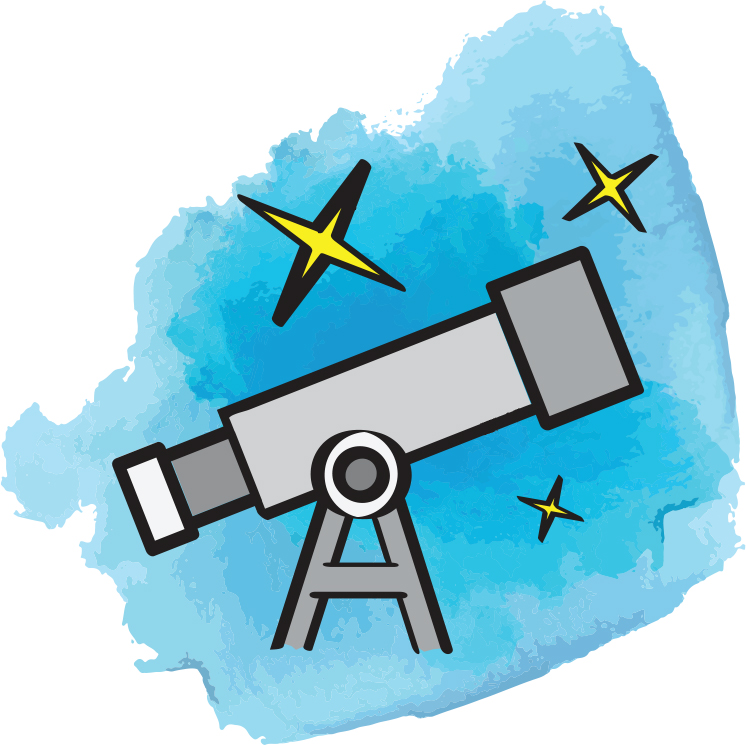
Passion Projects
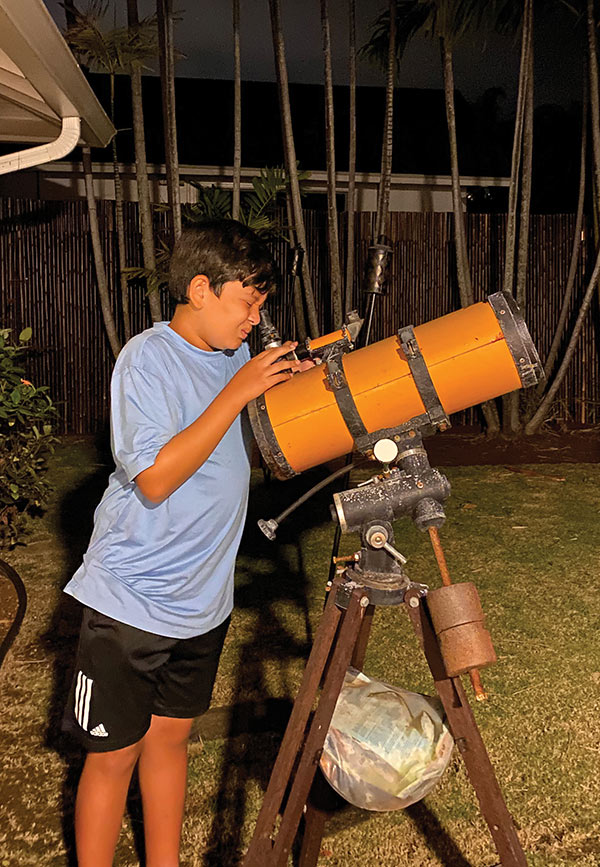
Holed up at home, with way too much time on our hands, we took up hobbies, all kinds of pastimes. This was evident scrolling through Facebook and seeing friends who never baked before perfecting their sourdough.
Pandemic passion projects helped alumna like Dianne Ige ’67 relieve the boredom, isolation and fear brought on by a lockdown lifestyle. “I had so much at-home time on my hands, and I needed to feel busy since I am retired,” says Ige, who took up Copperplate calligraphy and paper crafts via online classes. “The classes demanded concentration and were milestones in the week to look forward to.”
Plus, her friends loved receiving snail mail, adorned with her calligraphy. She also recently finished her first paper project, a lantern, which she decorated with dogwood and pussy willow motifs that she learned in her calligraphy class. A pocketbook and matchbook-style card are next. In other words, she’s hooked.
Then there’s Ethan Camp ’27, whose stargazing artwork was featured in the last issue of the Bulletin. After it became clear last spring that the COVID-19 lockdown would last for more than a few weeks, the sixth grader began stargazing from his backyard. “It was difficult getting used to the new class schedules, and everything was getting canceled,” he says. “I was feeling overwhelmed.”
The idea to put his family’s backyard telescope to use came to him because he and his classmates had just returned from their trip to Hawai‘i Island, where they stargazed at Kīlauea. “I was just sitting at home and thought, ‘what if I just look up at the sky?’” he says. “It’s peaceful – the night sky. And with stars and the sky in general, there’s so much to learn.”
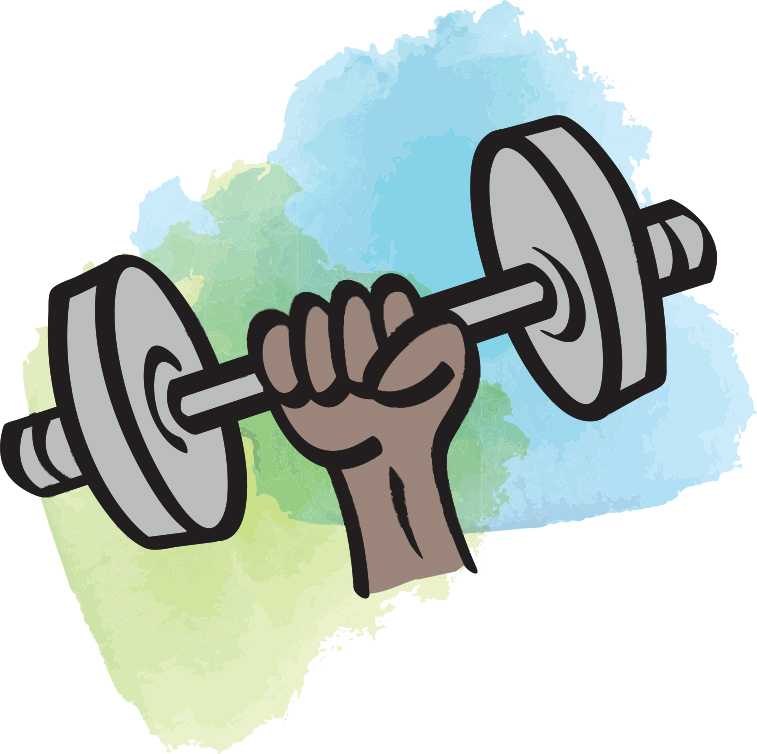
Health is the New Wealth

Record sales of home fitness equipment, a shortage of dumbbells, yoga classes in parks. Our year of pandemic living has inspired a widespread appreciation for fitness. Healthy bodies stand a better chance of fighting a virus, of course, but many of us are waging a more insidious war when commutes to work or school were replaced by hours of computer time at the dining table.
To hear personal trainer and fitness instructor Dane Okamura ’08 tell it, demand is coming from all types. Workout fanatics facing shuttered or reduced-capacity gyms have taken their sessions online, guided by trainers on Zoom, or turned to home gyms or adapted workouts to use their own bodyweight. Newbies are reaching out to ask about personal training sessions or advice on vegetarian diets.
There’s so much demand that Okamura transitioned his full-time sales job to part-time to accommodate a 150% increase in his fitness sessions. “People are paying more attention to their wellness now, which is pretty awesome,” says Okamura, who specializes in high-intensity interval training and Lagree fitness. “It’s not just me, it’s all these personal trainers. People are looking for safe and effective workouts.”
The big question: How much of this will stick? Better health is a perennial New Year’s resolution, or in the case of a pandemic, a renewed priority when the world goes into lockdown and you reassess your entire life. What happens when the pandemic drags on for a year – or two, or more? The answer depends on the degree to which other pandemic-induced changes stick around – how much we’re still working and learning from home; and how much our options for fitness outside our homes open or close.
– By Mari Taketa

Punahou Zones in on Health
During the pandemic, Punahou became a Blue Zones School thanks to the efforts of Jae-Hee Wong ’21, who helped get the School certified last fall. The Blue Zones Project has been encouraging schools nationwide to adopt healthy practices. “I thought it would be a really great initiative to start at Punahou” Wong says. “It was a meaningful service project I could get behind.”
Wong says Punahou has solid programs in place, including having a student wellness club, a health and wellness council and a strict tobacco ban. The School also offers healthy lunch options and makes it a priority for students to get regular physical activity. For Blue Zones certification, Wong documented such practices, and identified new efforts that could be initiated. “I personally hope this brings more awareness to student wellness on campus,” she says.
